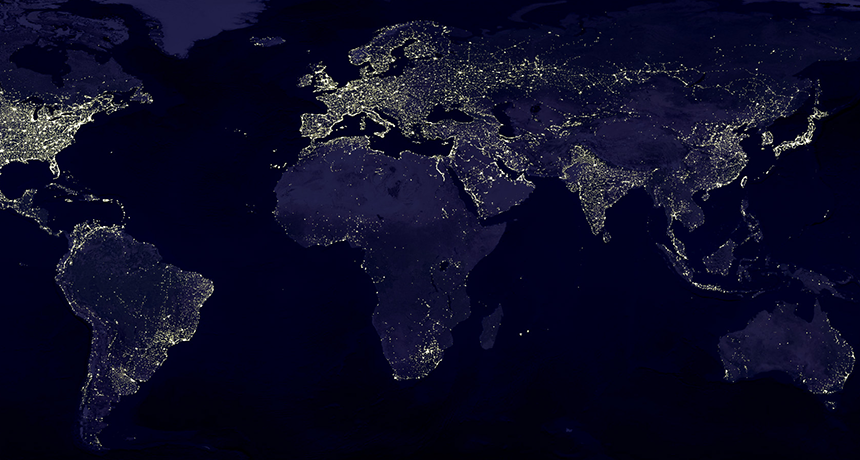circadian rhythm Biological functions such as body temperature and sleeping/waking times that operate on a roughly 24-hour cycle.
disrupt (n. disruption) To break apart something; interrupt the normal operation of something; or to throw the normal organization (or order) of something into disorder.
light pollution The intrusion of unwanted light into areas that would naturally remain dark. Light pollution interferes with our ability to view the night sky. It also alters the circadian rhythms of plants, animals and people.
moon The natural satellite of any planet.
organism Any living thing, from elephants and plants to bacteria and other types of single-celled life.
planet A celestial object that orbits a star, is big enough for gravity to have squashed it into a roundish ball and has cleared other objects out of the way in its orbital neighborhood. To accomplish the third feat, the object must be big enough to have pulled neighboring objects into the planet itself or to have slung them around the planet and off into outer space. Astronomers of the International Astronomical Union (IAU) created this three-part scientific definition of a planet in August 2006 to determine Pluto’s status. Based on that definition, IAU ruled that Pluto did not qualify. The solar system now includes eight planets: Mercury, Venus, Earth, Mars, Jupiter, Saturn, Uranus and Neptune.
star The basic building block from which galaxies are made. Stars develop when gravity compacts clouds of gas. When they become dense enough to sustain nuclear-fusion reactions, stars will emit light and sometimes other forms of electromagnetic radiation. The sun is our closest star.

